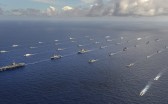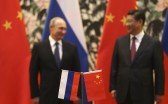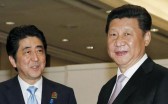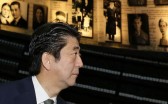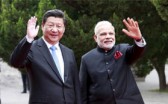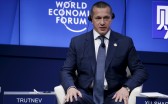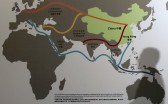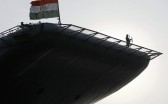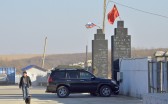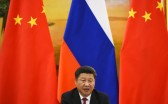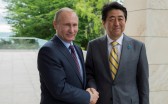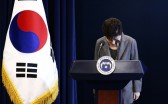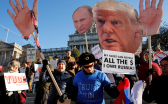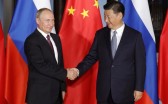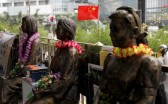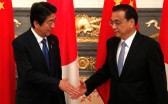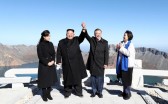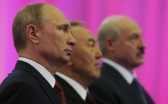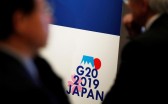Two months after the G20, Abe Shinzo can look back with satisfaction that, despite failing to secure the “supermajority” that the ruling LDP party would have needed to secure constitutional revision, he had scored a comfortable summer 2019 election victory,1 suggesting that he had made good use of the opportunity to host the G20 to springboard towards continued domestic success. In so doing, Abe had consolidated his grip on power and all but confirmed his status as Japan’s longest serving postwar prime minister.2 Yet, looking at Abe’s foreign policy results tells a less positive story. The two months were consumed with bilateral tensions with Moon Jae-in and difficult balancing between Donald Trump and Xi Jinping with trade negotiations of vital importance to Japan and Abe’s legacy hanging precariously on Trump’s whims.
While it would be hard to argue against the undoubted guile and pragmatism of Abe, as the man who has steadied Japan though almost a decade of choppy international waters, as Benjamin Self and I outlined prior to the summit in our contrasting positive and negative perspectives, the goals set out for the Osaka G20 are proving hard to make good on. In a follow-up to those original Alternative Scenarios, below I examine the emerging outcomes in the three key focus areas of politics, economics, and security. In politics, Abe has kept the initiative by targeting Moon with broad popular support and retaining the image of good personal relations with other leaders, especially Trump. In economics, he succeeded in delaying trade talks with Trump while largely avoiding the sort of antagonistic tweets and statements that so many others have faced. Still, this falls far short of success given the dire consequences Japan would suffer if the intensifying trade war between the US and China were not to be averted. Finally, in security, Abe has tried to straddle the US-Iran divide and avoid fallout from a Chinese crackdown in Hong Kong, but Trump has pressured him to send naval vessels to the Straits of Hormuz in defiance of Iran while the situation in Hong Kong has grown more ominous, making it less likely that Japan can remain on the sidelines. Given Abe’s troubles on all fronts, it would be difficult to conclude that the G20 gave momentum to Abe’s foreign policy.
Politics
Just as domestically Abe capitalized on the G20 by showing leadership and probably also by his trade onslaught against the highly unpopular South Korea and its leader, he managed to hold his ground in international leadership circles. In Japan, other recent international relations issues have been overshadowed by a sustained media focus on the ongoing discord between Tokyo and Seoul.3 Abe benefited from Trump’s refusal to become involved—an unusual decision for a US president when two critical allies not only were turning sharply against each other but also complicating the defense posture of the US. No particular setbacks occurred in relations with other major leaders. Finally, at the G7 summit in late August, Abe managed to stay clear of the raw tensions between Trump and some of the European leaders. Politically, there has been no noticeable falloff for Abe despite his fight with Moon and balancing of Trump and Xi Jinping.
Abe’s relationships with Vladimir Putin and Xi have weathered pitfalls in the summer of 2019 rather well. When other leaders at the G7 pushed back against Trump’s repeated appeals to bring Russia back and revive the G8, Abe stayed neutral without breaking from his consistent effort since 2013 to woo Putin and give him the benefit of the doubt. After strenuous efforts to normalize summitry with Xi, Abe in the weeks that followed their breakthrough summit in Osaka and through meetings at the ministerial level, kept talking up warmer relations with China’s leader. Despite voicing various concerns, he has been careful to avoid overtly ostracizing or alienating Beijing.4 As a result, one could argue that, in response to the stark political reality of being sandwiched between American and Chinese interests, Abe has made a kind of leap-of-faith in positively reinterpreting parts of Beijing’s own rhetoric around ‘win-win’ scenarios.5 By doing so he can selectively incorporate parts of Xi’s controversial “China Dream” concept into fulfilling his own espoused agenda of openness, which is oriented around maximizing trans-border exchanges and promoting mutual gains.
If one adds Abe’s strong ties to Narendra Modi to the mix, at a time of strained Trump-Modi relations, then the case is even stronger that he has positioned himself to bridge differences among the major powers, perhaps uniquely so. Yet, in the Trump era there is little room for multilateralism or building bridges. It is difficult to imagine that Abe can capitalize on his connections. Xi, Putin, and Kim Jong-un are still inclined to put pressure on Abe, Moon is retaliating, and US demands on Japan may be looming.
Economics
Japan’s economy could be hit hard by US tariffs on Japanese autos, which Trump has warned could be coming, or by a Sino-US trade war, leading to a sharp reduction in the intermediate goods exports Japan sends to China, which wind up as industrial goods for the US market. Despite Abe’s image as a champion of free trade against protectionism, he could not steer the G20 or play a big role at the G7 in advancing this cause. At best, he can keep Trump’s anger focused elsewhere and await opportunities that may arise.
In addition, the escalation of tit-for-tat punitive measures being taken by the Japanese and Korean governments, starting with Japan’s imposition of tightened export restrictions, has created uncertainty.6 These risk negatively affecting not only the makers of computer components and other high-tech goods, but a range of subsidiaries and other service providers as a knock-on effect. July and August saw one salvo after another in this bilateral battle, begun by Japanese punishment for supposed exports of its dual-use components with security implications to countries such as North Korea. It is difficult to see this follow-up to the G20 summit as consistent with Abe’s message at that time or as part of any positive scenario not only for economics but for security.
Notwithstanding this somewhat gloomy outlook, there are still plenty of hopeful signs in terms of Japan’s overall performance within international trade regimes,7 and Abe still has the Rugby World Cup and the Tokyo Olympic Games ahead. Both of these stages are potentially economic assets that are set to showcase Japan’s ability to successfully create infrastructure for, and host, world-class events.8 They are also already having a financially positive impact at the regional level, as seen, for instance, in the case of Okinawa Prefecture’s booming development of related sports camps and sports tourism packages.9 Meanwhile, the scheduled increase in Japan’s consumption tax this fall could compound falling trade levels in its negative impact on the economy.
Security
In a sudden shift in this sector in recent weeks, the Abe administration found itself embroiled in an unexpected security contingency in the Straits of Hormuz. Although Japan is not the central player in what is likely to prove a pivotal confrontation between the US and Iran, the fallout from this spat threatens to derail Abe’s calls for openness, transparency and, particularly, cooperation in the international arena. Instead of playing a bridging role between the US and Iran when he visited Iran, Abe has been left on the sidelines as differences stemming from the disputed Iran nuclear deal have manifested themselves in a regional security crisis.10 It has put Japan in an awkward position and leaves its leader’s G20 vision somewhat dented. Abe would not have been expecting to deal with calls to dispatch the Japan Self-Defense Forces (JSDF) to the Middle East,11 even more so following bold attempts to persuade the United States that it should reconsider its exit from the deal and imposition of wide-reaching sanctions.
While the escalation of US-Iran tensions might potentially lead Japan into unchartered waters, divisions over their respective approaches to Kim Jong-un’s North Korea carry a potentially even greater security challenge. Trump’s recent summit with Kim was much criticized in the international press for lacking substance and failing to secure any real progress, but that does not mean that it was without substantial effect. In particular, it sent a message to Abe that his view of how to approach denuclearization on the Korean Peninsula was not shared by Trump, leaving Japan’s security subject to the whims of the US president. The North’s subsequent testing of missiles might have helped to bring Trump and Abe closer, especially in terms of restoring a harder line against Pyongyang—all the more pertinent in comparison to Moon—but this hardly amounts to successful progress being made on an agenda of supposed “proactive pacifism.”12
Pressure may await, depending on developments in Hong Kong or calls for installing intermediate missiles now that the INF treaty has been cast aside, for Japan to engage in security matters at odds with Abe’s efforts to boost relations with Xi Jinping. Moreover, Trump’s demand for a huge increase in Japanese payments for host-nation support poses a risk to Japan-US relations. Taiwan also could become a hot spot with new US arms sales and increased PRC pressure on the island’s leadership. It will not be easy to keep the security front quiet, suggesting a negative scenario for Japan in the coming months.
Conclusion
Apart from the multi-sided conflict with South Korea, Abe has not had a very eventful July and August in regard to international relations. He has continued to operate in the shadow of Trump. Politically, despite Trump’s mercurial relations with world leaders, Abe has held to his course of building bridges. Economically, Abe has been buffered by fears of fallout from the Sino-US trade war and of one-sided demands for a trade deal to satisfy Trump’s “America First” ideology without yet having to face the consequences. In security, Abe also faces Trump’s impulsive challenges from uncertainty over North Korea to protection of shipping lanes by Iran. After the G20 meetings, Abe could do little to shape a more positive environment for Japan, having to await Trump’s unilateral moves and deciding to concentrate on teaching Moon Jae-in a lesson at a cost to Japan.
As host to the G20, Abe gained stature at home and navigated between contending forces without any prospect of building momentum toward Japan’s goals. To minimize the damage was all he could expect. Waiting for further damage while keeping his eyes on managing Trump served to contain the negative scenario in the heat of summer. The period is likely to be judged by how the struggle with Moon Jae-in concludes, for which Abe has the advantage through his good relationship with Trump and Japan’s superior economic and security situation as viewed from the US. Even so, the summer hardly can be said to have produced a positive scenario for Abe.
1. “Saninsen: Kaihyō sokuho,” NHK, July 25, 2019, https://www.nhk.or.jp/senkyo/database/sangiin/2019/
2. “Abe shushō, zaishoku rekidai sani ‘tajaku yatō’ de dōkyō no ijin wo nuku?” Nikkei bijinesu, June 6, 2019, https://business.nikkei.com/atcl/gen/19/00002/060600421/
3. “Kankoku pusan, Nikkan kankei akka de Nagasaki ken to no kōryū chūdan,” Yomiuri Shimbun, July 29, 2019, https://www.yomiuri.co.jp/world/20190728-OYT1T50171/
4. Isabel Reynolds and Emi Nobuhiro, “Abe Hails China Ties, Raises Tough Issues as Xi Visits Japan,” Bloomberg, June 27, 2019, https://www.bloomberg.com/news/articles/2019-06-27/japan-hosts-landmark-china-visit-amid-signs-of-fresh-tensions
5. Angela Poh and Minjiang Li, “A China in Transition: The Rhetoric and Substance of Chinese Foreign Policy under Xi Jinping,” Asian Security, Vol. 13, No. 2 (2017), pp. 84-97.
6. , “Nikkan, yushutsu kanri de tairitsu chōmei ni: Senryaku busshi meguri,” July 12, 2019, Nihon Keizai Shimbun, https://www.nikkei.com/article/DGXMZO47247580R10C19A7EA1000/
7. , “Japan: Eonomic Forecasts, 2019-2021 Outlook,” Trading Economics, 2019, https://tradingeconomics.com/japan/forecast
8. “Games vision,” Tokyo 2020, 2019, https://tokyo2020.org/en/games/vision/
9. “Sports Islands Okinawa,” JTB, 2019, https://okinawasportsisland.jp/
10. Bruce Riedel, “Lessons from America’s first war with Iran,” Brookings Institute, May 22, 2013, https://www.brookings.edu/articles/lessons-from-americas-first-war-with-iran/
11. Kyomiya Ryo and Watanabe Taka, “Horumuzu kaikyō no yūshi rengō: jieitai haken nara Nihon no sentakushi wa,” Asahi Shimbun Digital, July 12, 2019, https://www.asahi.com/articles/ASM7C66MHM7CUTFK019.html
12. Stephen Nagy, “Japan’s Proactive Pacifism: Investing in Multilateralization and Omnidirectional Hedging,” Strategic Analysis, Vol. 41, No. 3 (March 2017), pp. 223-235.
